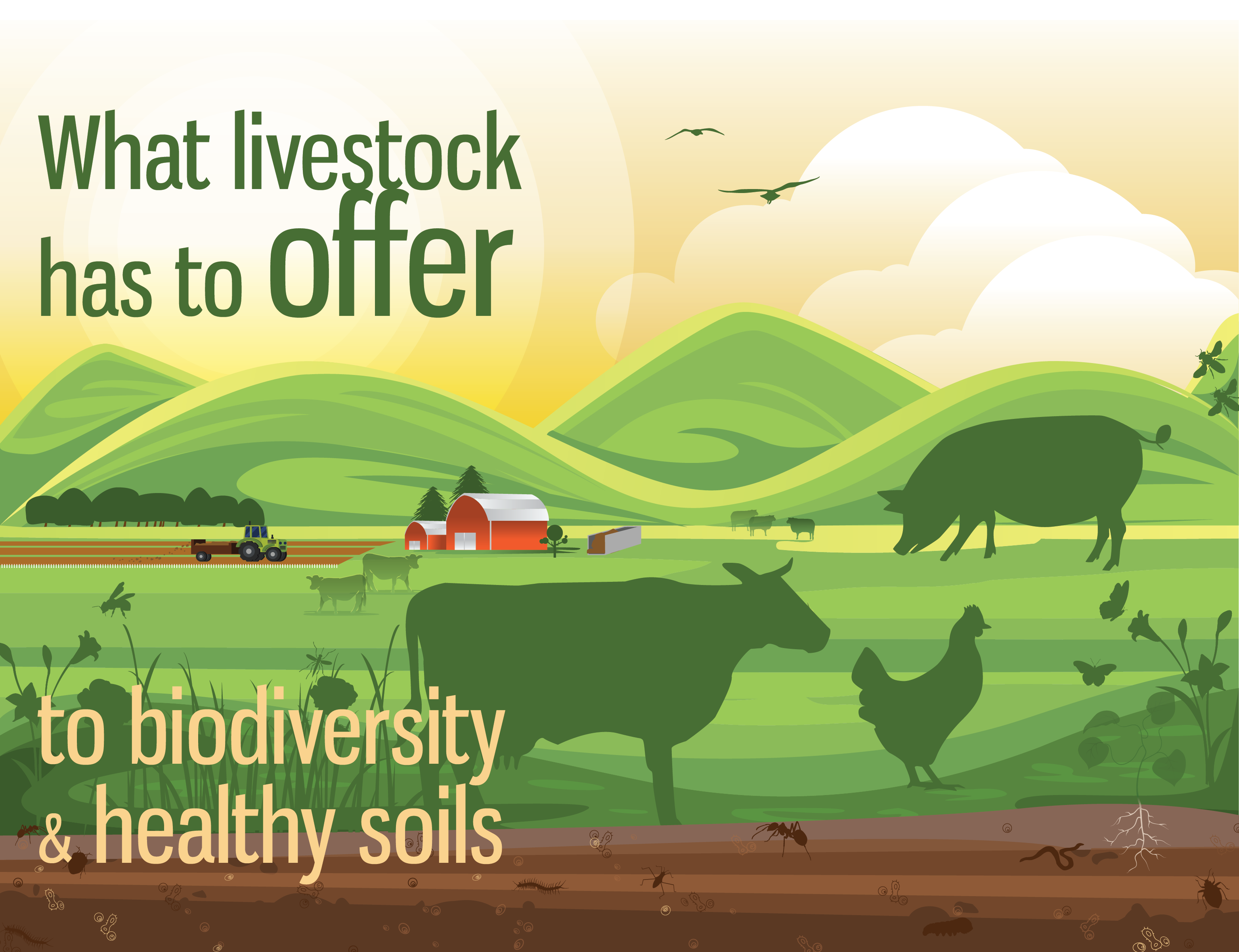Topic 2020

“The continuous, accelerating decline in biodiversity is of particular concern as biodiversity provides the fabric of life with a range of ecosystems services which are crucial for human well-being“. “Main direct drivers of biodiversity loss, in order of their importance, are land use change, overexploitation (through intensive agriculture, forestry and fishing practices), climate change, pollution and invasive species” . 2020 will be the year of biodiversity with the UN aiming to develop a post-2020 framework.
Livestock is often blamed for its contribution to biodiversity losses but the reality is more complex. The effects of livestock on biodiversity are variable across farming systems and livestock production can also make a positive contribution to biodiversity objectives and preservation of habitats. Very often, research initiatives on soil fertility do not include animal farming. Still, livestock is a reservoir of solutions to increase soil C-sequestration, biological fertility, organic matter, etc. In some cases, it generates in negative impacts as emission of reactive N and dissemination of medicine residues or antimicrobial resistance.
ATF would like to explore the different pathways, needs in cooperation and R&I to support an animal production able to contribute to ecosystems remediation, whatever in soils and on biodiversity.
8th ATF-EAAP special session
01 December 2020 – Remotely
Since 2013, the ATF-EAAP Special Session during the EAAP Annual Meeting aims to bring together animal science with practice of animal production and connect researchers, policymakers, industry representatives and societal organisations. Every year, a different topic is addressed during this session.
Welcome & introduction, by Jean-Louis Peyraud, outgoing ATF President & Matthias Gauly, outgoing EAAP President
Setting the scene
- Assessment of livestock impacts and positive contributions to biodiversity and soil health, by Félix Teillard, FAO
- Trade-offs between livestock, biodiversity and soils health and approaches towards positive impacts, by Alberto Arroyo Schnell, International Union for Conservation of Nature
Practices
- Farmers best practices to mitigate or remediate biodiversity losses, by Seán Finan, CEJA
- Animal genetic resources and breeding goals for biodiversity-rich livestock systems, by Sipke J. Hiemstra, Centre for Genetic Resources – Wageningen University & Research
- Good practices of industry driving production, by Dionys Forster & Robert Erhard, Nestlé
Panel discussion, moderated by Frank O’Mara, Teagasc – with the audience, the speakers and Patrick Worms, EURAF
Closing remarks, by Frank O’Mara, incoming ATF President & Isabel Casasús, incoming EAAP President
10th ATF seminar
21 April 2021 – Remotely
Welcome & introduction, by Frank O’Mara, ATF President
Setting the scene
- EU Policy maker, by Humberto Delgado Rosa, European Commission – DG ENVI
Towards an agriculture supportive of biodiversity
- Synergies between biodiversity and soil organic matter, by Vincent Manneville, Idele
- Governance and cooperation, by Alex Datema, farmer – Boerennatuur
- Healthy soils and biodiversity: what ruminants can do that cropping systems cannot?, by Donal Sheehan, farmer – The Bride Project
- Good practices of industry driving production, by Miguel Ãngel Higuera, ANPROGAPOR
How to improve the positive contribution of livestock and remediate biodiversity and soils health?
- Panel discussion, moderated by Jean-Louis Peyraud, INRAE & former ATF President – with the audience, the speakers and Tiago Domingos, Terraprima
- Closing remarks, by Frank O’Mara, ATF President
Report of the 10th ATF seminar
Policy brief: What livestock has to offer to biodiversity and healthy soils
